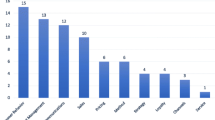Abstract
Most meta-analyses in marketing contain studies which themselves contain multiple measurements of the focal effect. This paper compares alternative procedures to deal with multiple measurements through the analysis of synthetic data sets in a Monte Carlo study and a re-analysis of a published marketing data set. We show that the choice of procedure to deal with multiple measurements is by no means trivial and that it has implications for the results and for the validity of the generalizations derived from meta-analyses. Procedures that use the complete set of measurements outperform procedures that represent each study by a single value. The commonly used method of treating all measurements as independent performs reasonably well but is not preferable. We show that the optimal procedure to account for multiple measurements in meta-analysis explicitly deals with the nested error structure, i.e., at the measurement level and at the study level, which has not been practiced before in marketing meta-analyses.
Similar content being viewed by others
References
Abernethy, Avery M, and George R. Franke. (1996). “The information content of advertising: A meta-analysis,” Journal of Advertising, 25(Summer), 1–17.
Brown, Steven P, Pamela M. Homer, and J. Jeffrey Inman. (1998). “A meta-analysis of relationships between adevoked feelings and advertising responses,” Journal of Marketing Research, 35 (February), 114–126.
Brown, Steven P, and Douglas M. Stayman. (1992). “Antecedents and consequences of attitudes toward the ad: a meta-analysis,” Journal of Consumer Research, 19 (June), 34–51.
Churchill, Gilbert A, Neil M. Ford, Steven W. Hartley, and Orville C. Walker. (1985). “The determinants of salesperson performance: a meta-analysis,” Journal of Marketing Research, 22 (May), 103–118.
Farley, John U, and Donald R. Lehmann. (1986). Meta-analyses in marketing: generalizations of response models. Lexington: Lexington books.
Farley, John U, Donald R. Lehmann, and Alan Sawyer. (1995). “Empirical marketing generalization using meta-analysis,” Marketing Science, 14(3, part 2), 36–46.
Goldstein, Harvey. (1995). Multilevel statistical models, second edition. London: Arnold.
Goldstein, Harvey, and Jon Rasbash. (1992). “Efficient procedures for estimation of parameters in multilevel models based on iterative generalized least squares,” Computational Statistics and Data Analysis, 13, 63–71.
Hunter, John E, and Frank L. Schmidt. (1990). Methods of meta-analysis: Correcting error and bias in research findings. Newbury Park: Sage.
Kalaian, Hripsime A, and Stephen W. Raudenbusch. (1996). “A multivariate mixed linear model for meta-analysis,” Psychological Methods, 1(3), 227–235.
Kayande, Ujwal, and Mukesh Bhargava. (1995). “An examination of temporal patterns in meta-analysis,” Marketing Letters, 5(2), 141–151.
Lodish, Leonard M, Magid Abraham, Stuart Kalmenson, Jeanne Livelsberger, Beth Lubetkin, Bruce Rihardson, and Mary Ellen Stevens. (1995). “How TV advertising works: A meta-analysis of 389 real world split cable TV advertising experiments,” Journal of Marketing Research, 32 (May), 125–139.
Lynn, Michael. (1991). “Scarcity effects on value: a quantitative review of the commodity theory literature,” Psychology & Marketing, 8(Spring), 43–57.
Peterson, Robert A. (1994). “A meta-analysis of Cronbach's coefficient alpha,” Journal of Consumer Research, 21 (September), 381–391.
Raudenbusch, Stephen W, Betsy J. Becker, and Hripsime A. Kalaian. (1988). “Modeling multivariate effect sizes,” Psychological Bulletin, 103, 111–120.
Rosenthal, Robert. (1991). Meta-analytic procedures for social research, revised edition. Newbury Park: Sage.
Rosenthal, Robert, and Donald B. Rubin. (1986). “Meta-analytic procedures for combining studies with multiple effect sizes,” Psychological Bulletin, 99(3), 400–406.
Sethuraman, Raj. (1995). “A meta-analysis of national brand and store brand cross-promotional price elasticities,” Marketing Letters, 6(4), 275–286.
Sheppard, Blair H, Jon Hartwick, and Paul R. Warshaw. (1988). “The theory of reasoned action: A meta-analysis of past research with recommendations for modifications and future research,” Journal of Consumer Research, 15 (December), 325–343.
Sultan, Fareena, John U. Farley, and Donald R. Lehmann. (1990). “A meta-analysis of applications of diffusion models,” Journal of Marketing Research, 27 (February), 70–77.
Szymanski, David M, Sundar G. Bharadwaj, and P. Rajan Varadarajan. (1993). “An analysis of the market share-profitability relationship,” Journal of Marketing, 57 (July), 1–18.
Tellis, Gerard J. (1988). “The price elasticity of selective demand: a meta-analysis of econometric models of sales,” Journal of Marketing Research, 25 (November), 331–341.
Trappey, Charles. (1996). “A meta-analysis of consumer choice and subliminal advertising,” Psychology & Marketing, 13 (August), 517–530.
Author information
Authors and Affiliations
Rights and permissions
About this article
Cite this article
Bijmolt, T.H., Pieters, R.G. Meta-Analysis in Marketing when Studies Contain Multiple Measurements. Marketing Letters 12, 157–169 (2001). https://doi.org/10.1023/A:1011117103381
Issue Date:
DOI: https://doi.org/10.1023/A:1011117103381




